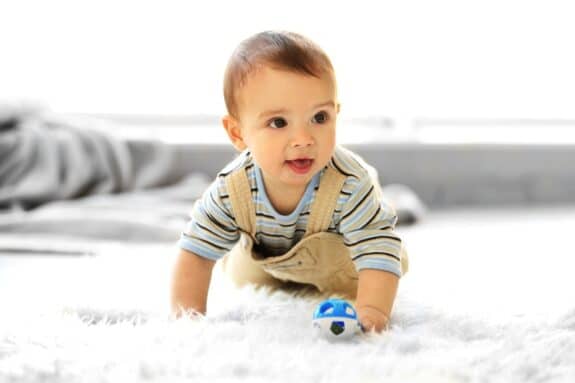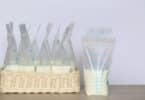Most animals can walk, moments after they are born. Human babies are different. They first learn to roll, sit up, crawl, and eventually pull themselves up into a standing position before they start walking. During at least one stage of this developmental process (crawling), they are close to the floor, where dirt, mold spores, and other microscopic bio-material can be found. Researchers have recently determined that crawling stirs up a cloud of these microbes, which babies then inhale.
As concerning as that knowledge may be for parents that are diligent about keeping their child’s environment clean and germ-free, experts say the exposure could be beneficial for babies. In fact, previous studies have found that children tend to have a stronger immune system if they are exposed to a wide range of microbes. Exposure may also reduce their risk of developing asthma and allergies as a child.
“Many studies have shown that inhalation exposure to microbes and allergen-carrying particles [during infancy] plays a significant role in both the development of, and protection from, asthma and allergic diseases,” Brandon Boor of Purdue University told Science Daily. “There are studies that have shown that being exposed to a high diversity and concentration of biological materials may reduce the prevalence of asthma and allergies later in life.”
To gain a better understanding of the microbes that babies are exposed to while crawling, Boor and his team created a robot baby that had the ability to crawl across the floor. Researchers then measured the microbes within the exposure area to determine what microbes were present, and their concentrations. What they found was both shocking and intriguing.
“We used state-of-the-art aerosol instrumentation to track the biological particles floating in the air around the infant in real-time, second by second. The instrument uses lasers to cause biological material to fluoresce. Most bacterial cells, fungal spores, and pollen particles are fluorescent, so they can be reliably distinguished from non-biological material in the air,” Boor says. “We also worked with a microbiology group at Finland’s National Institute for Health and Welfare, which conducted DNA-based analysis of the microbes we collected onto filters.”
Boor and his team determine that crawling babies are exposed to 20 times the bio particles as walking adults and children. Since babies do not filter microbes in the same way as adults, those particles find their way deep into the lungs.
“For an adult, a significant portion of the biological particles are removed in the upper respiratory system, in the nostrils and throat. But for very young children, they more often breathe through their mouths, and a significant fraction is deposited in the lower airways — the tracheobronchial and pulmonary regions. The particles make it to the deepest regions of their lungs.”
But that may not be an altogether bad thing.
In America and most other developed nations, parents clean and disinfect, hoping that it reduces the chances of them and their children getting sick – but that may not be the best way to protect children from illness. David Strachan, a British epidemiologist, developed a theory in the late 1980s known as the “hygiene hypothesis.” It suggests that a too-clean environment may actually hinder the development of a child’s immune system, which can increase their risk of illness, asthma, and allergies. Based on what he had to say about the microbe exposure that infants experience while crawling, it is probably safe to say that Boor agrees with that theory.
“Exposure to certain bacterial and fungal species can result in the development of asthma, but numerous studies have shown that when an infant is exposed to a very high diversity of microbes, at a high concentration, they can have a lower rate of asthma later in life. Such exposures act to stimulate and challenge your immune system,” Boor said. “While our research established new methods for infant microbial exposure assessment, much remains to be discovered,” Boor says. “I hope to continue to work with microbiologists and immunologists to better understand the role of indoor air microbes and allergens on early-childhood health.”







